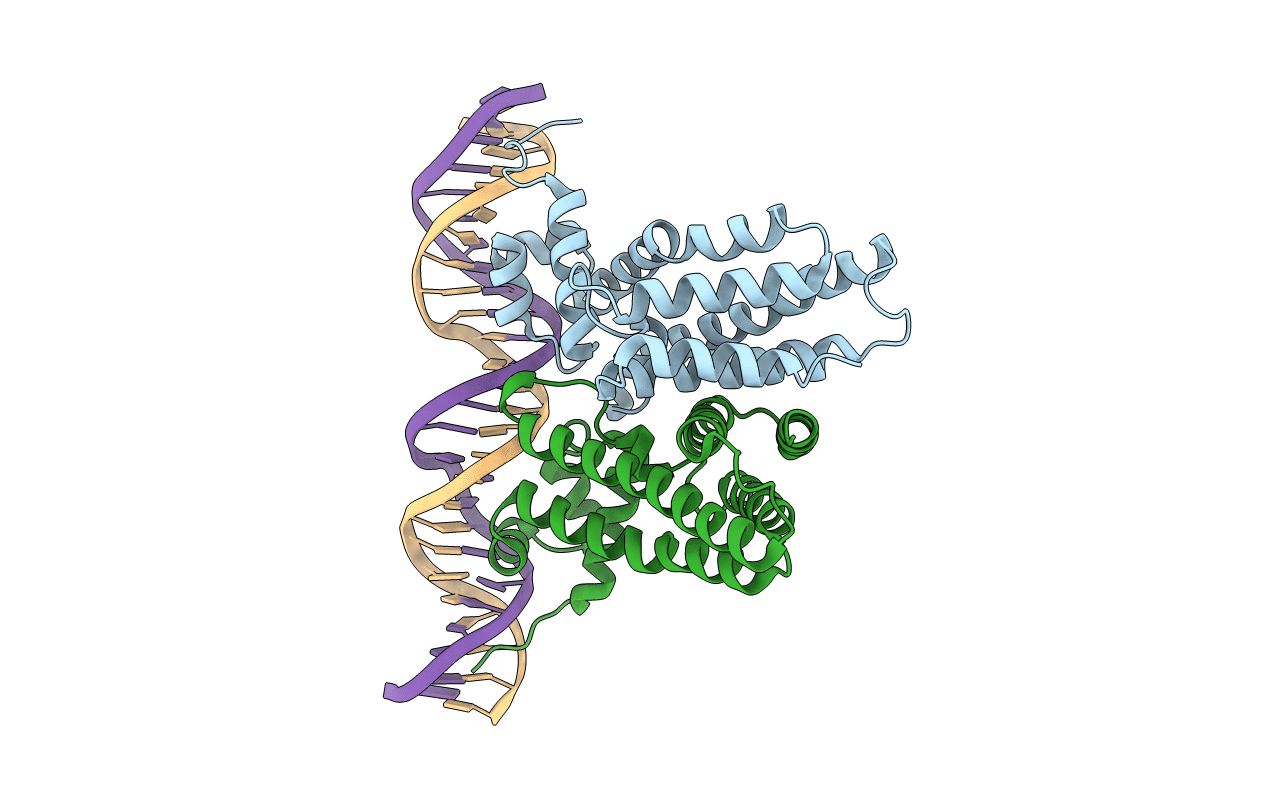
Deposition Date
2019-01-25
Release Date
2020-01-29
Last Version Date
2024-10-23
Entry Detail
PDB ID:
6NSM
Keywords:
Title:
TetR family transcriptional regulator CifR C99T-C107S-C181R Cysteines mutant complexed with 26bp double-strand operator DNA
Biological Source:
Source Organism:
Pseudomonas aeruginosa UCBPP-PA14 (Taxon ID: 208963)
Pseudomonas aeruginosa (Taxon ID: 287)
Pseudomonas aeruginosa (Taxon ID: 287)
Host Organism:
Method Details:
Experimental Method:
Resolution:
2.80 Å
R-Value Free:
0.24
R-Value Work:
0.22
R-Value Observed:
0.22
Space Group:
P 21 21 2


